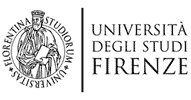November 6/17/19 - Justiina Dahl's seminars
Energy Issues in the Arctic - Justiina Dahl, EUI
Session 1. What is the Arctic and how is it governed?
In 2008 the European Parliament suggested the drafting of an international treaty to the Arctic similar to the Antarctic Treaty in order to protect the environment of the region emerging from the frost because of global climate change. The Arctic, however, is not devoid of permanent residents, or sovereign state activities, unlike the Antarctic. The region considered as Arctic by the Arctic Council, the main intergovernmental organization that deals with arctic issues, is divided into the sovereign territory of eight states. The Arctic Ocean, on the other hand, consists of the territorial waters and still unresolved extended economic zones of five states. In this session students get an overview of the different international and regional governance structures that guide and regulate activities in the North including natural resource extraction, environmental protection and the rights of indigenous peoples.
Mandatory reading for the session:
Byers, M. (2013). International Law and the Arctic. Cambridge: Cambridge University Press. pp. 1-27
Suggested reading:
Ingimundarson, V. (2010). The geopolitics of Arctic natural resources. The European Parliament: Directorate-general for external policies.
Byers, M. (2013). International Law and the Arctic. Cambridge: Cambridge University Press. pp. 28-55
Session 2. Moscow’s point of view on the development of the Arctic
The question of governance of resource extraction in the Arctic is, above all, a question of the actions and interests of sovereign states. This session offers a roadmap for understanding those of the Russian Federation, which encompasses the biggest and most populated territory in the Far North. Other things that make the Russian case special are e.g. that of the region’s total wealth the Russian Arctic constitutes two-thirds; of the approximately 61 large oil and natural gas fields discovered within the Arctic Circle by 2013, 43 were in Russia; and that as much as 20 percent of Russia's GDP and its total exports are generated north of the Arctic Circle.
Mandatory reading for the session:
Rowe, E. W., & Moe, A. (2009). Northern Offshore Oil and Gas Resources: Policy Challenges and Approaches. In Russia and the North. Ottawa: University of Ottawa Press. Pp. 107-127.
Suggested reading:
Wilson Rowe, Elana: Introduction, Policy Aims and Political Realities in the Russian North. In Russia and the North. Ottawa: University of Ottawa Press, pp. 1-15
EY, Arctic Oil and Gas, available at http://www.ey.com/Publication/vwLUAssets/Arctic_oil_and_gas/$File/Arctic_oil_and_gas.pdf
Laruelle, Marlene (2013) Russia's Arctic Strategies and the Future of the Far North, Armonk, NY: M.E.Sharpe.
Session 3. Politicizing the Arctic future: The prosperous New North or the region reflecting the approaching gloom and doom of global society?
The third and concluding session introduces the students to the politics of the Arctic through a temporal distinction of politics into four categories; Policy, Polity, Politicking, and Politicization. The distinction between the four gives students the keys for understanding how the conceptualizations of the Arctic as a microcosm, a laboratory or a canary in a coalmine in International Relations’ analysis of the region are already, in themselves, acts of power play. In order to break down what kind of power these words have two completely different scenarios of what the future of the Arctic will look like that use the same scientific numbers are introduced. The first one is a resource focused positive projection of the New North. According to this scenario the Arctic region will prosper in the future because of the oil and gas exploration as well as global shipping that are enabled in the future because of global warming. The threats that follow from this development are those related to state sovereignty and traditional geopolitics. The second scenario highlights the problems related to global climate change and the difficulties in responding to it efficiently. The warming of the region because of rising global non-renewable energy consumption that originates largely from outside of the region is seen rather as an escalating problem than a great possibility.
Mandatory reading for the session:
Palonen, Kari. 2003. “Four Times of Politics: Policy, Polity, Politicking, and Politicization.” Alternatives. 28(2): 171-188.
Suggested readings:
Järvenpää, P., & Ries, T. (2011). The Rise of the Arctic on the Global Stage. In J. Kraska (Ed.), Arctic security in an age of climate change (pp. 129–144). Cambridge; New York: Cambridge University Press.
Duyck, S. (2012). Which Canary in the Coalmine? The Arctic in the International Climate Change Regime, The Yearbook of Polar Law, vol. 4, 585-617
Huebert, R. (2009). Science, Cooperation, and Conflict in the Arctic Region. In J. M. Shadian & M. Tennberg (Eds.), Legacies and Change in Polar Sciences: Historical, Legal and Political Reflections on the International Polar Year (pp. 63–71). Ashgate Publishing, Ltd.


